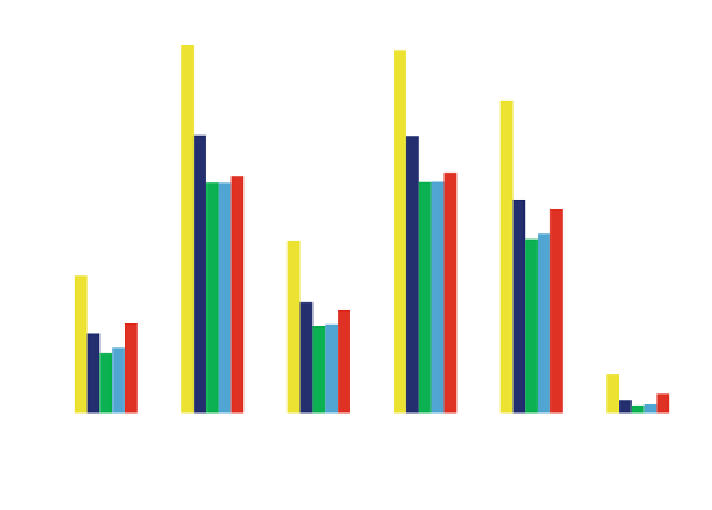Civil Engineering Reference
In-Depth Information
Innovative systems with silica aerogel in interspace were also investigated with
both monolithic and granular silica aerogels. Granular aerogel with grain size in the
0.5-3 mm range is filled in the interspaces with 25 mm and 40 mm thickness
(respectively, glazings 4 and 5), while monolithic pane has 20 mm thickness (type 6).
Finally, a triple-glazing system was simulated: glazing 7 is composed of low-e
glasses and argon in both the interspaces.
Four different façade orientations were investigated: South, East, West, and
North.
5.2.2 Results and Discussion
The energy per conditioned building area (kWh/m
2
) was estimated both in winter
and summer. Significant results were obtained for the south orientation of the
glazing. Figures
21
and
22
show the influence of both building location and kind
of glazing on the annual energy demand for heating and cooling.
The heating energy demand shows a very wide variation between low values
for Rome, Beijing, and London and very high values for Helsinki and Moscow.
Rome has in fact the highest external temperatures during the winter period, such
as Beijing, especially from March to October. Moreover, Rome and Beijing have a
global solar radiation higher than the other cities (1,462 and 1,400 kWh/m
2
per year, respectively). More interesting is the influence of the glazing system
type: the best solution in winter for all the cities is the monolithic aerogel glazing
105
1-STANDARD GLAZING OLD
BUILDING
2-STANDARD GLAZING
3-LOW-E
4-GRANULAR AEROGEL
5-GRANULAR AEROGEL
6-MONOLITHIC AEROGEL
7-TRIPLE GLAZING
100
95
90
85
80
75
70
65
60
55
50
45
40
35
30
25
20
15
10
5
0
BEIJING
HEATING
HELSINKI
HEATING
LONDON
HEATING
MOSCOW
HEATING
OTTAWA
HEATING
ROME HEATING
Fig. 21 South exposure: annual energy demand for heating for the six cities and for seven
different kinds of glazing































